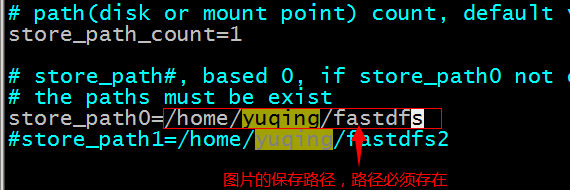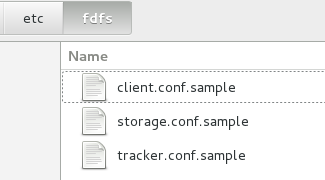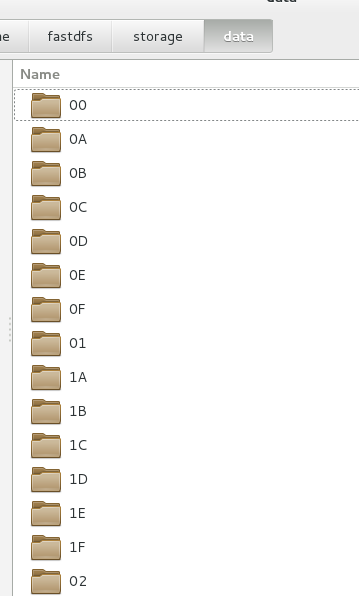本博客没有技术含量,纯粹的安装教程。
第一步:把fastDFS都上传到linux系统。
yum -y install libevent
1、解压缩,解压完毕的目录
2、进入到解压的libfastcommon-1.0.7的目录下,执行./make.sh3、./make.sh install
执行完毕会在usr下创建lib64,其中创建文件libfaxtcommon.so
4、把/usr/lib64/libfastcommon.so文件向/usr/lib/下复制一份
第四步:安装Tracker服务。
1、解压缩FastDFS2、进入到解压的FastDFS目录下,执行./make.sh
3、./make.sh install
安装后在/usr/bin/目录下有以fdfs开头的文件都是编译出来的。
配置文件都放在/etc/fdfs文件夹下,如下:
5、配置tracker服务。修改/FastDFS/conf/tracker.conf文件。命令vim tracker.conf出现以下界面(查询vi命令使用),修改完毕后拷贝到/etc/fdfs下。


重启使用命令:/usr/bin/fdfs_trackerd /etc/fdfs/tracker.conf restart
第五步:安装storage服务。
1、如果是在不同的服务器安装,第四步的1~4需要重新执行。
2、配置storage服务。修改/FastDFS/conf/storage.conf文件,路径修改为自己指定的。


Ip改为自己的。
3、启动storage服务。/usr/bin/fdfs_storaged /etc/fdfs/storage.conf
重启:/usr/bin/fdfs_storaged /etc/fdfs/storage.conf restart
启动成功后在配置的图片保存路径下创建data文件夹,在data生成两级256个16进制命名的文件夹,,部分截图如下:
第六步:搭建nginx提供http服务。
可以使用官方提供的nginx插件。要使用nginx插件需要重新编译。
fastdfs-nginx-module_v1.16.tar.gz
1、解压插件压缩包
2、修改/fastdfs-nginx-module/src/config文件,把其中的local去掉。

./configure \
--prefix=/usr/local/nginx \
--pid-path=/var/run/nginx/nginx.pid \
--lock-path=/var/lock/nginx.lock \
--error-log-path=/var/log/nginx/error.log \
--http-log-path=/var/log/nginx/access.log \
--with-http_gzip_static_module \
--http-client-body-temp-path=/var/temp/nginx/client \
--http-proxy-temp-path=/var/temp/nginx/proxy \
--http-fastcgi-temp-path=/var/temp/nginx/fastcgi \
--http-uwsgi-temp-path=/var/temp/nginx/uwsgi \
#以上的配置和安装nginx时相同,添加一下配置
--add-module=/usr/local/fastdfs-nginx-module/src 注意自己的安装路径
4、make
5、make install
6、把/fastdfs-nginx-module/src/mod_fastdfs.conf文件复制到/etc/fdfs目录下。编辑:




7、nginx的配置
在nginx的conf文件中找到nginx.conf修改Server配置:
server {
listen 80;
server_name 192.168.101.3; #自己的ip
location /group1/M00/{
#root /home/FastDFS/fdfs_storage/data; #图片存储路径
ngx_fastdfs_module;
}
}8、将lib64下的libfdfsclient.so拷贝至/usr/lib下
cp /usr/lib64/libfdfsclient.so /usr/lib/
9、启动nginx






























 1140
1140

 被折叠的 条评论
为什么被折叠?
被折叠的 条评论
为什么被折叠?








